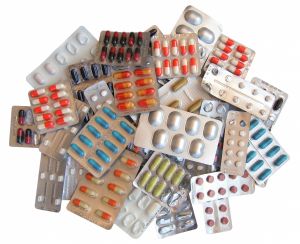The kidneys are organs impressive through which passes every 45 minutes for about 5 liters of water. Our kidneys eliminate toxins from our body and maintain the balance of minerals in the body. Every day in the regulation of arterial blood pressure. From day to day, our kidneys produce erythropoietin, which maintains blood counts to normal values.
A healthy body in 24 h excreted an average of about 2 liters of urine.
How often reach for painkillers? How can just a coffee and a cigarette, especially in the morning after waking up? How great are going to a popular soft drink after a so salt meal ? You like to put so much salt on your food?
It's really pretty!
How often have you wondered how all these habits affect our body, in our liver and kidneys?
The human body is very tolerant, given the terror that every day we make it.
The kidneys are responsible for natural detoxification. There are very bad habits that distort the process of detoxification and elimination of toxins from our body.
Below are some tips that should certainly read:
Painkillers dangerous for the kidneys, heart and stomach
Prolonged and frequent use of painkillers is very dangerous. In particular it relates to non-steroidal anti-inflammatory drugs such as diclofenac sodium, ibuprofen, etc.. Today in medicine there is a kidney disease called nephropathy medication, which means inflammation of the kidney caused by drugs. These drugs have an extremely detrimental effect on the tissue and the structure of the kidney, decreased renal blood flow. In addition to pain medication, damage to the kidneys and can cause some medicines for high blood pressure.
Cigarette smoking is dangerous to your kidneys
Cigarettes are poison for the whole body, especially the lungs and heart. Components of cigarette smoke damage the relentless and kidneys. Cigarette smoking is a particular problem in chronic patients, who already have a history of kidney damage, such as patient with long-term diabetes.
Large amounts of salt in the diet is dangerous
Salty foods causes high blood pressure. In people who already have a diagnosis of hypertension too much salt in the diet is extremely dangerous. High blood pressure, kidney damage, and may lead to chronic renal failure and hemodialysis. One tablespoon of salt per day is sufficient. To start reducing your intake of salted product and meat products.
White sugar is a potential risk for kidney
Excessive intake of sugars and carbohydrates increase the risk of obesity and diabetes. Obesity and diabetes are the biggest killers of our time. The fact that the majority of patients on dialysis due to diabetes, you speaks volumes about how damn dangerous diabetes. Fat on the stomach produces a large number of pollutants that everyday things thrombosis in your blood vessels. One of the next thrombosis can be a heart attack or a stroke, heart attack, or lung, or a kidney.
The next time you drop by heart to nibble around ten in the evening, remember this little story.





